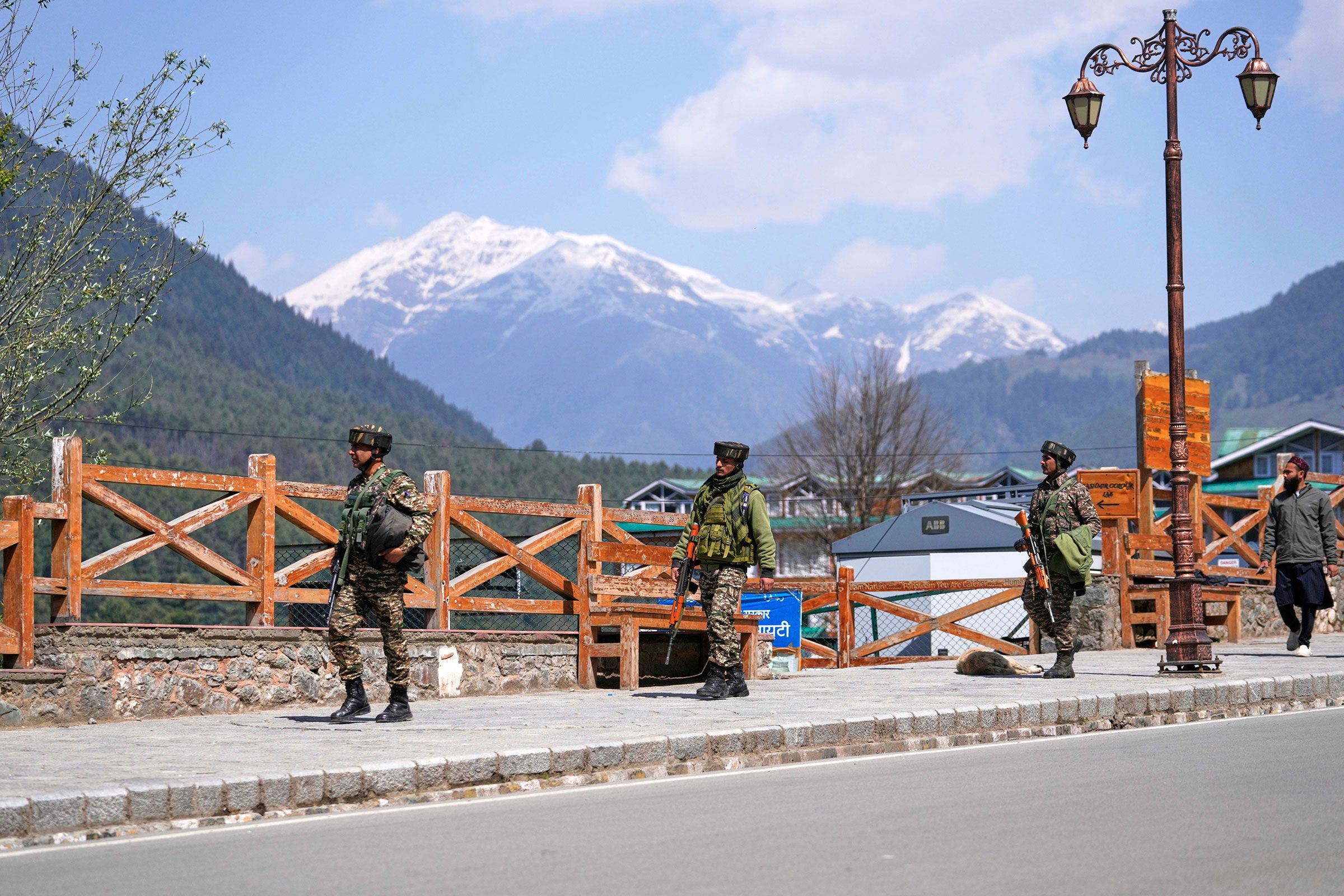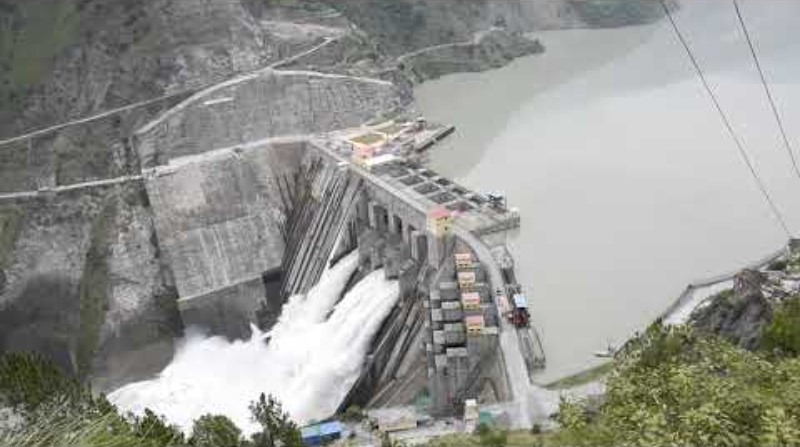Chilling Foresight: Intel Warned of Kashmir Tourist Targeting Before Pahalgam Massacre
Srinagar 05 May 2025: In a disturbing revelation that casts a long shadow over the tragic events in Pahalgam, highly placed officials have disclosed that intelligence agencies had issued stark warnings about the potential targeting of tourists in the Kashmir Valley days preceding the deadly terror attack. These intelligence briefings specifically highlighted the vulnerability of tourists lodging in hotels situated on the outskirts of Srinagar, nestled in the foothills of the majestic Zabarwan range. This ominous foresight, though acted upon with heightened security measures in Srinagar, ultimately failed to prevent the horrific attack in Pahalgam, raising serious questions about the efficacy of intelligence gathering and preventative action in the region.
The Anatomy of a Warning: Intelligence Flags Srinagar’s Periphery
The intelligence inputs, shared just days before the Pahalgam massacre, painted a concerning picture of potential terrorist intentions. These reports specifically pinpointed hotels located on the fringes of Srinagar, in the tranquil yet potentially vulnerable areas bordering the Zabarwan mountain range, as being at an elevated risk. This geographical focus likely stemmed from a confluence of factors, including the relative ease of access to these less heavily fortified locations and the potential for a high concentration of tourist targets.
This intelligence prompted an immediate and significant security response in the Srinagar area. Top echelons of the Jammu and Kashmir Police swiftly descended upon the city, establishing a command center to personally oversee extensive combing operations. These operations were concentrated around areas such as Dachigam National Park, Nishat Garden, and their adjacent localities – regions known for their natural beauty and thus, a significant presence of tourist accommodations. The urgency and high-level involvement underscore the seriousness with which the intelligence warnings were initially treated.
A Ghost from the Past: The Sonamarg Precedent
The decision to intensify security measures in the Zabarwan foothills was not without precedent. Officials revealed that these very areas had come under heightened scrutiny following a brutal terrorist attack in Gangangir, Sonamarg, in October of the previous year. That devastating incident saw seven lives tragically lost, including a doctor, at a construction site. The geographical proximity of Gangangir, situated on the opposite side of the Zabarwan range overlooking Srinagar, served as a stark reminder of the persistent threat lurking in these seemingly serene landscapes. The memory of that attack undoubtedly fueled the urgency of the security response in Srinagar following the latest intelligence warnings.
The Frustration of Futile Efforts: Operation Ends Without Breakthrough
Despite a sustained two-week operation characterized by extensive searches across the outskirts of Srinagar, the security forces were unable to achieve any significant breakthroughs. The intensive combing operations, while demonstrating a proactive response to the intelligence inputs, ultimately yielded no tangible results in terms of apprehending potential attackers or preempting the tragedy that would later unfold in Pahalgam. The operation was eventually called off on April 22nd – a date that would tragically coincide with the very day terrorists unleashed their deadly assault on unsuspecting tourists in the Pahalgam area, killing 26 individuals. This stark timeline underscores the agonizing reality that despite the intelligence warnings and the subsequent security efforts, the attack was not prevented.
A Prime Target: Foiled Plot Against PM’s Visit
The intelligence reports also unearthed a chilling plot with a potentially far greater impact. Sources revealed that terrorist elements had harbored intentions to carry out a “nefarious design” during the highly anticipated visit of Prime Minister Narendra Modi earlier last month. The Prime Minister was scheduled to flag off the inaugural train service connecting Katra to Srinagar, a significant milestone in integrating the Kashmir Valley with the rest of the nation’s railway network. This revelation highlights the strategic calculations of the terrorist groups, aiming to strike at a high-profile event with significant national and international attention.
Officials unequivocally stated that the Prime Minister’s visit, initially slated for April 19th, was postponed solely due to adverse weather forecasts predicting dangerously high-speed winds in the Katra region. This clarification was likely intended to dispel any speculation linking the postponement to security concerns, although the intelligence about potential attacks undoubtedly added a layer of complexity to the planning and security arrangements surrounding the visit.
The Enemy’s Agenda: Disrupting Progress and Sowing Fear
The officials interviewed offered a clear perspective on the motivations behind these terrorist activities. They asserted that “state and non-state actors sitting across the border” – a thinly veiled reference to Pakistan and its sponsored militant groups – are vehemently opposed to the impending railway link. This infrastructure project symbolizes the increasing integration of Kashmir with India, a development that undermines the separatist agenda and narratives propagated by these external actors.
The officials posited that these elements likely sought to overshadow the momentous occasion of the first train reaching Srinagar with a barbaric act of violence. By targeting tourists, they aimed to create widespread fear and instability, thereby diverting international attention away from the positive development of the railway link and reinforcing a narrative of chaos and insecurity in the valley. This calculated strategy underscores the understanding by these actors of the power of visual narratives and their potential to influence international perception.
The Pahalgam Horror: A Calculated Act of Brutality
Unraveling the details of the Pahalgam attack, officials revealed a horrifying sequence of events indicating meticulous planning and execution. Emerging information suggests that at least two local terrorists had already infiltrated the tourist groups, effectively blending in with the unsuspecting visitors. As soon as the first shots were fired, these embedded operatives herded the terrified tourists towards a food court complex. It was at this location that two other terrorists, reportedly of Pakistani origin, unleashed a barrage of gunfire, resulting in the tragic deaths of 26 individuals.
The officials emphasized that the primary objective of this heinous attack appeared to be the creation of widespread fear and panic among the populace. Furthermore, there was a palpable concern that this act of terror was deliberately intended to incite retaliatory attacks against Kashmiris residing in other parts of the country. This highlights the dangerous and divisive agenda of the perpetrators, seeking to sow discord and communal disharmony beyond the immediate geographical location of the attack.
Swift Response and Reassurance: Averting Further Crisis
In the immediate aftermath of the Pahalgam killings, Chief Minister Omar Abdullah reportedly took swift action, engaging in direct communication with top officials in New Delhi. This prompt intervention led to immediate directives being issued to state governments across India, instructing them to ensure the safety and security of Kashmiri locals residing within their respective jurisdictions. This rapid response was crucial in preventing the terrorists’ potential goal of inciting widespread retribution and further escalating tensions.
Baisaran Clarification: Separating Fact from Rumor
Amidst the aftermath of the attack and the ensuing anxieties, reports surfaced regarding the popular tourist destination of Baisaran, suggesting that it had been closed to visitors. Officials moved quickly to clarify the situation, stating unequivocally that Baisaran remains accessible to tourists throughout the year, with specific exceptions only during the annual Amarnath Yatra pilgrimage or periods of heavy snowfall that render the area inaccessible.
Furthermore, the Jammu and Kashmir administration had proactively taken steps to enhance the tourism infrastructure at Baisaran. A tender for the development and management of the area was issued and subsequently awarded to an individual from South Kashmir in August of the previous year for a three-year period, at a cost of Rs 3 crore. This investment has resulted in tangible improvements, including the complete fencing of the Baisaran meadow and the establishment of a zipline facility, indicating a commitment to promoting tourism in the region despite the prevailing challenges.
A Worrisome Shift: The Sophistication of Terrorist Arsenal
Officials also raised a significant concern regarding the evolving nature of terrorism in Jammu and Kashmir. They highlighted a disturbing trend in the recovery of increasingly advanced weaponry from encounter sites. This includes sophisticated M-series rifles, high-precision sniper rifles, and armour-piercing bullets. The origin of these weapons is a matter of serious investigation, with suspicion falling on the possibility that they are leftover armaments and ammunition from NATO troops previously stationed in Afghanistan. The presence of such advanced weaponry poses a significant challenge to security forces and underscores the external support and resources available to terrorist groups operating in the region.
The Illusion of Numbers: Beyond Tourist Arrivals as a Gauge of Peace
In a crucial observation, authorities cautioned against solely relying on tourist arrival figures as a reliable indicator of peace and normalcy in Jammu and Kashmir. They pointed to the historical example of former Chief Minister Ghulam Nabi Azad, who had previously used high tourist numbers to suggest a return to normalcy in the region. Tragically, shortly after his statement in May 2006, a stark reminder of the underlying instability occurred when terrorists attacked a bus carrying tourists from Gujarat in Srinagar, near the Mughal Gardens, resulting in four deaths and six injuries.
This historical context underscores the critical point that in a conflict zone, tourism, while a vital economic activity, should primarily be viewed through that lens rather than as an infallible barometer of overall peace and security. The desire of people to experience the beauty of Kashmir does not necessarily equate to a complete absence of underlying tensions or the cessation of terrorist threats.
A Shift in Strategy: Halting the Blasting of Houses
Addressing the controversial practice of blasting houses during counter-terrorism operations, officials stated that this tactic had been halted at the request of the elected government of Jammu and Kashmir. This decision likely reflects a recognition of the potential for alienating the local population and the need for counter-terrorism strategies that prioritize minimizing civilian impact and fostering greater community trust.
Echoes of Anguish: Public Outcry and the Nirbhaya Parallel
Finally, officials highlighted the significant public reaction in the aftermath of the Pahalgam killings. They noted the spontaneous protests that erupted across the entire Kashmir Valley on April 22nd, drawing a striking parallel to the widespread public movements witnessed in New Delhi following the horrific Nirbhaya case. This comparison underscores the profound sense of shock, grief, and outrage felt by the local population in response to the brutal targeting of innocent civilians, signaling a deep yearning for peace and security in the region.




